Related Research Articles

The coyote is a species of canine native to North America. It is smaller than its close relative, the gray wolf, and slightly smaller than the closely related eastern wolf and red wolf. It fills much of the same ecological niche as the golden jackal does in Eurasia, though it is larger and more predatory, and it is sometimes called the American jackal by zoologists. Other names for the species, largely historical, include the prairie wolf and the brush wolf.

Buteo is a genus of medium to fairly large, wide-ranging raptors with a robust body and broad wings. In the Old World, members of this genus are called "buzzards", but "hawk" is used in North America. As both terms are ambiguous, buteo is sometimes used instead, for example, by the Peregrine Fund.
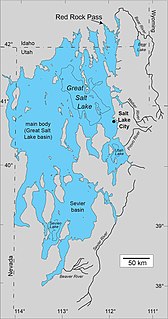
Lake Bonneville was the largest Late Pleistocene paleolake in the Great Basin of western North America. The Western Interior Seaway preceded Lake Bonneville. Lake Bonneville was a pluvial lake that formed in response to an increase in precipitation and a decrease in evaporation as a result of cooler temperatures. Lake Bonneville covered much of what is now western Utah and at its highest level extended into present-day Idaho and Nevada. Many other hydrographically closed basins in the Great Basin contained expanded lakes during the Late Pleistocene, including Lake Lahontan in northwestern Nevada.

Harris's hawk, formerly known as the bay-winged hawk or dusky hawk, and known in Latin America as peuco, is a medium-large bird of prey that breeds from the southwestern United States south to Chile, central Argentina, and Brazil. Birds are sometimes reported at large in Western Europe, especially Britain, but it is a popular species in falconry and these records almost certainly all refer to escapes from captivity.

Helianthus is a genus of plants comprising about 70 species. Except for three species in South America, all Helianthus species are native to North America and Central America. The common names "sunflower" and "common sunflower" typically refer to the popular annual species Helianthus annuus, whose round flower heads in combination with the ligules look like the sun. This and other species, notably Jerusalem artichoke, are cultivated in temperate regions and some tropical regions as food crops for humans, cattle, and poultry, and as ornamental plants. The species H. annuus typically grows during the summer and into early fall, with the peak growth season being mid-summer.

The painted turtle is the most widespread native turtle of North America. It lives in slow-moving fresh waters, from southern Canada to northern Mexico, and from the Atlantic to the Pacific. The turtle is the only species of the genus Chrysemys, which is part of the pond turtle family Emydidae. Fossils show that the painted turtle existed 15 million years ago. Four regionally based subspecies evolved during the last ice age.
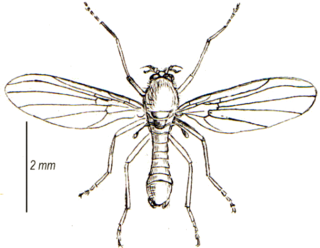
Thaumaleidae, the solitary midges or trickle midges, are a group of nematoceran flies related to the Ceratopogonidae, Chironomidae, and the Simuliidae. They are small, stocky, yellow to brown flies (3–4 mm). Very few species are known for this family. Larvae are found in films on rocks and the nonfeeding adults are usually found on foliage along the same streams in which the larvae are found. A few solitary midges are found in the Southern Hemisphere, but Thaumaleidae are generally an Holarctic family.
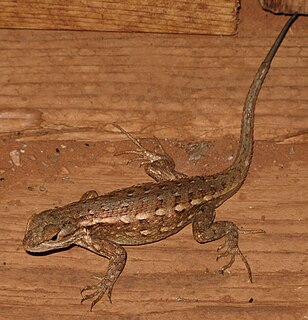
The sagebrush lizard is a common species of phrynosomatid lizard found at mid to high altitudes in the western United States of America. It belongs to the genus Sceloporus in the Phrynosomatidae family of reptiles. Named after the sagebrush plants near which it is commonly found, the sagebrush lizard has keeled and spiny scales running along its dorsal surface.
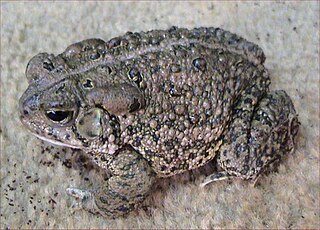
Woodhouse's toad is a medium-sized true toad native to the United States and Mexico. There are three recognized subspecies. A. woodhousii tends to hybridize with Anaxyrus americanus where their ranges overlap.

The northern leatherside chub is a cyprinid fish of western North America.

Agropyron cristatum, the crested wheat grass, crested wheatgrass, fairway crested wheat grass, is a species in the family Poaceae. This plant is often used as forage and erosion control. It is well known as a widespread introduced species on the prairies of the United States and Canada.
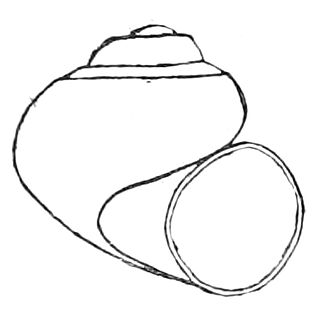
The Utah roundmouth snail, also known as the Utah valvata or desert valvata, scientific name Valvata utahensis, is a species of freshwater snail with a gill and an operculum, an aquatic gastropod mollusc in the family Valvatidae, the valve snails.

The black-tailed jackrabbit, also known as the American desert hare, is a common hare of the western United States and Mexico, where it is found at elevations from sea level up to 10,000 ft (3,000 m). Reaching a length around 2 ft (61 cm), and a weight from 3 to 6 lb, the black-tailed jackrabbit is the one of the largest North American hares. Black-tailed jackrabbits occupy mixed shrub-grassland terrains. Their breeding depends on the location; it typically peaks in spring, but may continue all year round in warm climates. Young are born fully furred with eyes open; they are well camouflaged and are mobile within minutes of birth, thus females do not protect or even stay with the young except during nursing. The average litter size is around four, but may be as low as two and as high as seven in warm regions.

Dale Gunnar Renlund is a cardiologist and member of the Quorum of the Twelve Apostles of The Church of Jesus Christ of Latter-day Saints. He has been a general authority of the church since 2009. Currently, he is the thirteenth most senior apostle in the church.

Bats are mammals of the order Chiroptera. With their forelimbs adapted as wings, they are the only mammals capable of true and sustained flight. Bats are more manoeuvrable than birds, flying with their very long spread-out digits covered with a thin membrane or patagium. The smallest bat, and arguably the smallest extant mammal, is Kitti's hog-nosed bat, which is 29–34 millimetres in length, 150 mm (6 in) across the wings and 2–2.6 g in mass. The largest bats are the flying foxes and the giant golden-crowned flying fox, Acerodon jubatus, which can weigh 1.6 kg and have a wingspan of 1.7 m.
The Straight Cliffs Formation is a stratigraphic unit in the Kaiparowits Plateau of south central Utah. It is Late Cretaceous in age and contains fluvial, paralic, and marginal marine (shoreline) siliciclastic strata. It is well exposed around the margin of the Kaiparowits Plateau in the Grand Staircase – Escalante National Monument in south central Utah. The formation is named after the Straight Cliffs, a long band of cliffs creating the topographic feature Fiftymile Mountain.

Populus fremontii, commonly known as Frémont's cottonwood, is a cottonwood native to riparian zones of the Southwestern United States and northern through central Mexico. It is one of three species in Populus sect. Aigeiros. The tree was named after 19th century American explorer and pathfinder John C. Frémont.

Teratophoneus is a genus of carnivorous tyrannosaurid theropod dinosaur which lived during the late Cretaceous period in what is now Utah, United States, containing a single known species, T. curriei. It is known from an incomplete skull and postcranial skeleton recovered from the Kaiparowits Formation. It was specifically named T. curriei in honor of Philip J. Currie.
Ogaridiscus is a genus of air-breathing land snails, terrestrial pulmonate gastropod mollusks in the family Zonitidae.
References
- ↑ Turgeon, D.D., J.F. Quinn, Jr., A.E. Bogan, E.V. Coan, F.G. Hochberg, W.G. Lyons, P.M. Mikkelsen, R.J. Neves, C.F.E. Roper, G. Rosenberg, B. Roth, A. Scheltema, F.G. Thompson, M. Vecchione, and J.D. Williams. 1998. Common and scientific names of aquatic invertebrates from the United States and Canada: Mollusks. 2nd Edition. American Fisheries Society Special Publication 26, Bethesda, Maryland: 526 pp.
- ↑ Bisby, F.A.; Roskov, Y.R.; Orrell, T.M.; Nicolson, D.; Paglinawan, L.E.; Bailly, N.; Kirk, P.M.; Bourgoin, T.; Baillargeon, G.; Ouvrard, D. (red.) (2011). "Species 2000 & ITIS Catalogue of Life: 2011 Annual Checklist". Reading, UK.: Species 2000. Retrieved September 24, 2012.
- ↑ ECOS Environmental Conservation Online System: Southern Tightcoil (Ogaridiscus subrupicola)
- ↑ Idaho Species Catalog: Southern Tightcoil (Ogaridiscus subrupicola)
- ↑ "Ogaridiscus subrupicola". Utah Division of Wildlife Resources. Archived from the original on May 19, 2017. Retrieved May 19, 2017.